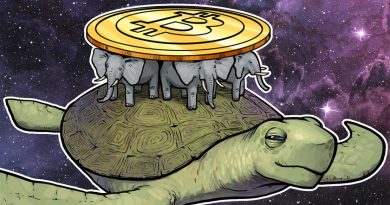Musician sells rights to deepfake her voice using NFTs
“Creating work with the voices of others is something to embrace,” said Holly Herndon.
American musician and composer Holly Herndon seems to be capitalizing on the principle of deep-fake technology by allowing fans to use a digital version of herself to create original artwork they can then sell.
According to a Thursday announcement from Herndon on Twitter, users who want to make their own deepfakes using the musician’s unique voice and image will have the opportunity to sell their minted creations using nonfungible token, or NFT, marketplace Zora. Herndon said fans can submit their digital copies to be approved by the project’s DAO and would receive 50% of any auction profits.
The project said it would initially release three “genesis” Holly+ NFTs along with submissions from the public, which will be minted using a smart contract and auctioned on Zora next month. Users will receive half of any profits, with 40% given to the DAO and the remainder to Herndon herself. The reserve price for two of the genesis NFTs is 15 Ether (ETH) — roughly $48,150 at the time of publication.
“Creating work with the voices of others is something to embrace,” said Herndon. “Anyone can submit artwork using my likeness.”
Related: Deep Truths of Deepfakes — Tech That Can Fool Anyone
Herndon’s digital twin — called Holly+ — may have significant implications for artists wanting to maintain control over their image and voice. Though the musician’s first two NFTs are seemingly unlikely to be mistaken for a natural speaking or singing voice, deepfakes have often been used to spread misinformation or otherwise manipulate the truth.
In this case, with the artist’s consent and encouragement, and with the technology likely to improve in the future, more realistic — and profitable — digital versions of Herndon could arise. At the moment, the DAO offers a check for profiting on non-approved voice clips.
“Vocal deepfakes are here to stay,” said Herndon for the release of Holly+ last month. “A balance needs to be found between protecting artists, and encouraging people to experiment with a new and exciting technology. That is why we are running this experiment in communal voice ownership.”




